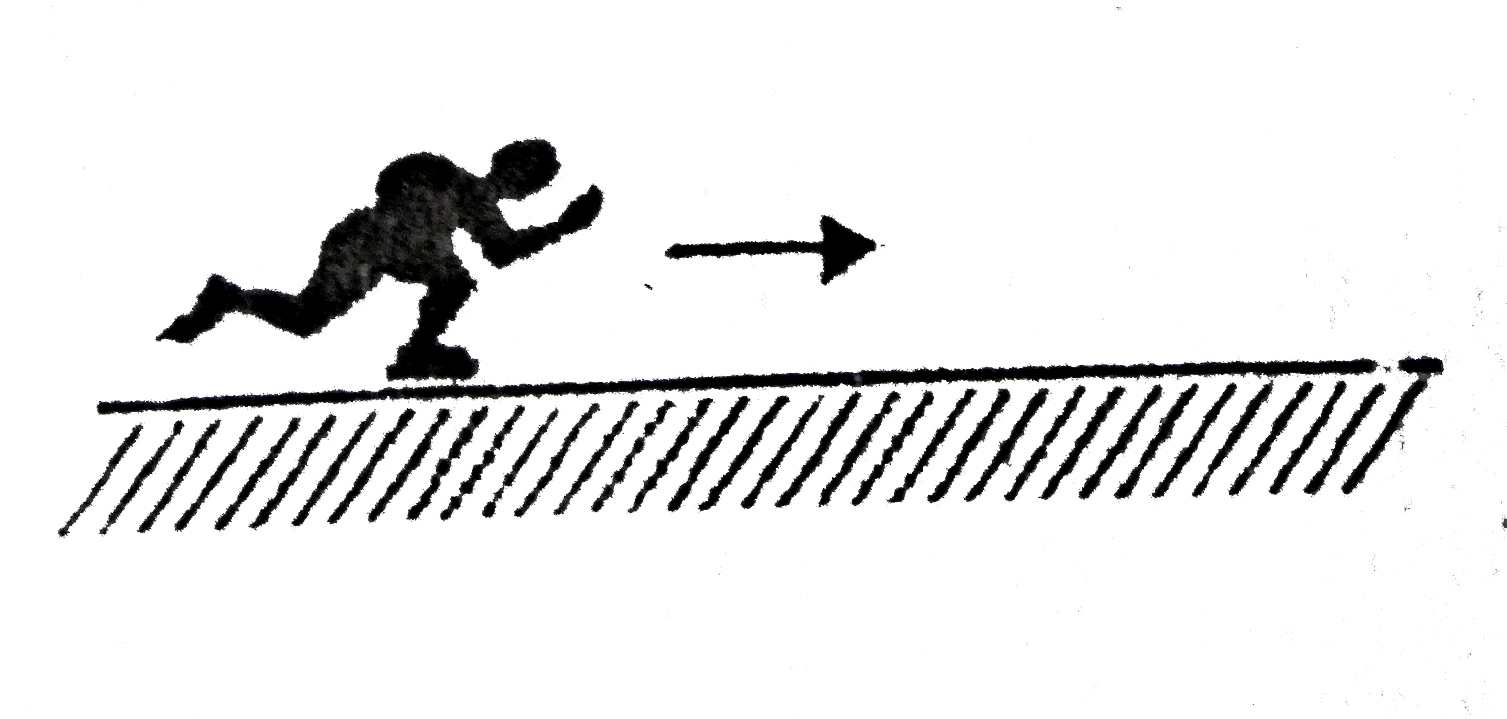The deceleration exerienced by a moving motor blat, after its engine is cut-off is given by , where is constant. If is the magnitude of the velocity at cut-off, the magnitude of the velocity at a time after the cut-off is.
The correct Answer is:D
To solve the problem, we need to find the velocity v of the motorboat at a time t after the engine is cut off, given the deceleration equation:
dvdt=−kv3
where k is a constant and v0 is the initial velocity at the moment of cut-off (i.e., at t=0).
1. Rearranging the Equation:
We start with the given equation:
dvdt=−kv3
Rearranging gives:
dvv3=−kdt
2. Integrating Both Sides:
We will integrate both sides. The left side will be integrated with respect to v from v0 to v, and the right side will be integrated with respect to t from 0 to t:
∫vv0dvv3=−k∫t0dt
3. Calculating the Integrals:
The integral on the left side:
∫dvv3=−12v2
Thus, we have:
−12v2∣∣∣vv0=−kt
This gives:
−12v2+12v20=−kt
4. Rearranging the Equation:
Rearranging the above equation:
12v20−12v2=kt
Multiplying through by 2:
1v20−1v2=2kt
5. Finding a Common Denominator:
Rearranging gives:
1v2=1v20−2kt
6. Taking the Reciprocal:
Taking the reciprocal of both sides gives:
v2=11v20−2kt
7. Final Expression for Velocity:
Thus, we can express v as:
v=v0√1−2ktv20
Final Answer:
The magnitude of the velocity at time t after the cut-off is given by:
v=v0√1+2ktv20
We start with the given equation:
dvdt=−kv3
Rearranging gives:
dvv3=−kdt
We will integrate both sides. The left side will be integrated with respect to v from v0 to v, and the right side will be integrated with respect to t from 0 to t:
∫vv0dvv3=−k∫t0dt
The integral on the left side:
∫dvv3=−12v2
Thus, we have:
−12v2∣∣∣vv0=−kt
This gives:
−12v2+12v20=−kt
Rearranging the above equation:
12v20−12v2=kt
Multiplying through by 2:
1v20−1v2=2kt
Rearranging gives:
1v2=1v20−2kt
Taking the reciprocal of both sides gives:
v2=11v20−2kt
Thus, we can express v as:
v=v0√1−2ktv20
The magnitude of the velocity at time t after the cut-off is given by:
v=v0√1+2ktv20
Topper's Solved these Questions
- KINEMATICS-1BOOK - CENGAGE PHYSICS ENGLISHCHAPTER - KINEMATICS-1EXERCISE - Graphical Concept
17 Videos
- KINEMATICS-1BOOK - CENGAGE PHYSICS ENGLISHCHAPTER - KINEMATICS-1EXERCISE - Graphical cancept
1 Videos
- KINEMATICS-1BOOK - CENGAGE PHYSICS ENGLISHCHAPTER - KINEMATICS-1EXERCISE - Subjective
29 Videos
- GRAVITATIONBOOK - CENGAGE PHYSICS ENGLISHCHAPTER - GRAVITATIONEXERCISE - INTEGER_TYPE
1 Videos
- KINEMATICS-2BOOK - CENGAGE PHYSICS ENGLISHCHAPTER - KINEMATICS-2EXERCISE - Exercise Integer
9 Videos
Similar Questions
The retardation experienced by a moving motor bike after its engine is cut-off , at the instant (t) is given by, a=−kv4 , where (k) is a constant. If v0 is the magnitude of velocity at the cut-off , the magnitude of velocity at time (t) after the cut-off is .
View SolutionA steamboat is moving at velocity v0 when steam is shut off. It is given that the retardation at any subsequent time is equal to the magnitude of the velocity at that time. Find the velocity and distance travelled in time t after the steam is shut off.
View SolutionA particle is projected with a speed v and an angle θ to the horizontal. After a time t, the magnitude of the instantaneous velocity is equal to the magnitude of the average velocity from 0 to t. Find t.
View SolutionThe linear speed of a particle moving in a circle of radius R varies with time as v=v0−kt, where k is a positive constant. At what time the magnitudes of angular velocity and angular acceleration will be equal ?
View SolutionA particle moves with an initial velocity V0 and retardation αv , where α is a constant and v is the velocity at any time t.
Velocity of particle at time is :
View SolutionA particle moves in a circular path of radius R with an angualr velocity ω=a−bt, where a and b are positive constants and t is time. The magnitude of the acceleration of the particle after time 2ab is
View SolutionThe velocity v of a particle of mass m changes with time t as d2vdt=−kv, where k is constant. Now, which of the following statements is correct?
View SolutionIf the equation for the displacement of a particle moving in a circular path is given by (θ)=2t3+0.5, where θ is in radians and t in seconds, then the angular velocity of particle after 2s from its start is
View SolutionIf a man has a velocity varying with time given as v=3t3,v is in m/s and t in sec then :

Find out the velocity of the man after 4sec.
View SolutionThe instantaneous velocity of a particle moving in a straight line is given as a function of time by: v=v0(1−(tt0)n) where t0 is a constant and n is a positive integer . The average velocity of the particle between t=0 and t=t0 is 3v04.Then , the value of n is
View Solution
